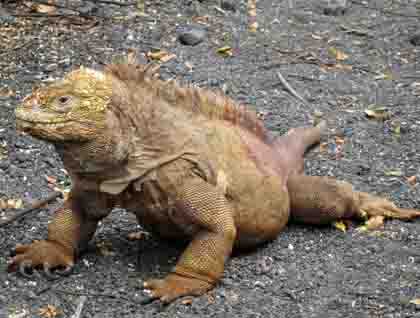With its shape like a sea horse, Isabela is by far the largest island in the Galápagos. With an area of 4,640 square kilometers it’s almost four times larger than Santa Cruz, the second largest of the archipelago. It was originally named Albemarle after the Duke of Albemarle, but in 1892 it was renamed Isabela after Queen Isabella of Spain. The island straddles the equator line and is one of the youngest here, at approximately one million years old.
On our third day into our expedition in the Galapagos, we moved south to visit Urbina Bay, an area that was raised up to ten meters in a sudden event in 1954. Early in the morning we set foot on the new black beach, heading along the shore where we found traces of this event in the form of petrified sea worms, barnacles and shells still attached to the black rocks, as well as an abundance of huge coral heads. Poisonous gases and high temperatures destroyed all the rest of the evidence of life in seconds. Walking inland, the landscape changed considerably with a path surrounded by lush vegetation. It’s impossible to appreciate the magnificence of that geological event, but we did take in the great number of land iguanas and giant tortoises of different sizes and ages, which rested impassively in front of us. Back at the black landing beach there was time for a quick dip in the water to cool down after the long and very interesting walk, before we came back to the National Geographic Endeavour.
During lunchtime we navigated north to reach our next destination, Tagus Cove. Also part of Isabela, this place was well known to many buccaneers and pirates in the past for its safe anchorage and for being an excellent place to hide their ships after stealing treasures to the Spaniards.
Our guests had chance to explore this unique place by kayak, observing a great amount of graffiti painted by ancient sailors for eternizing their ships or names forever. We observed penguins, flightless cormorants, and sea turtles showing us their heads and inviting us to share with them the clear waters of this incredible undersea world. And certainly we did it. After kayaking we headed back to snorkel, observing penguins in a feeding frenzy, catching a great number of small salemas. With them, foraging on algae, green sea turtles were gliding through the ocean, showing us their incredible bodies while along the seaweed colorful fish were the delight of our guests. But the most incredible part was when one of our guests called me insistently to observe two seahorses swimming among the seaweed, their orange bodies moving with the waves. What an incredible experience!
Towards the later part of the afternoon we landed along the rocky shore to climb some wooden steps to get to the rim of the crater, from where we enjoyed the view of Darwin Lake. Uphill, the landscape was changing considerably, with a background of Fernandina Island on one side, while on the opposite side, we saw the majestic views of the lava fields of Darwin Volcano. The colors of sunset changed the landscape spectacularly with a halo of mystery and uniqueness, observing as nature gave us this beautiful gift called Galapagos.




